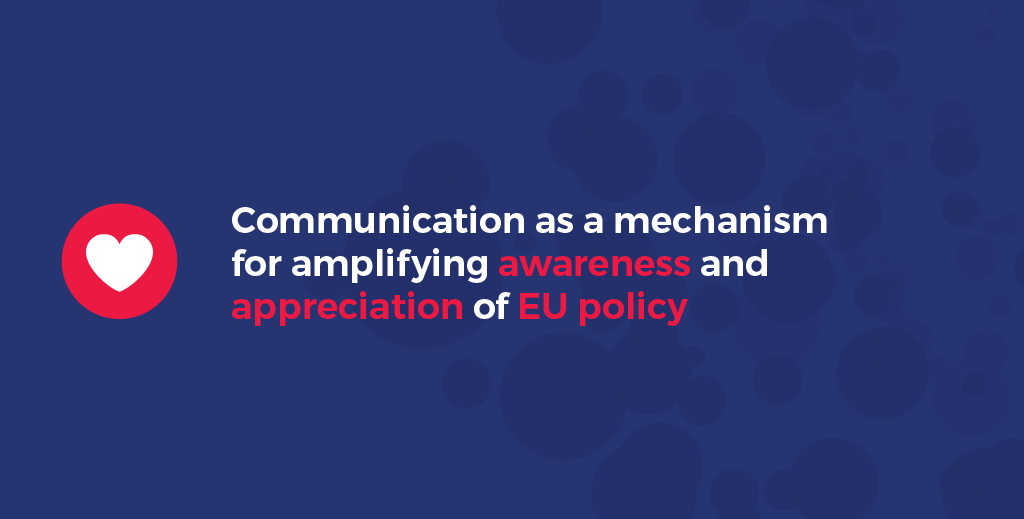Communicating Cohesion Policy: what is the impact on local audiences?

To what extent does policy communication produce and amplify meanings? How much does it affect the understanding of local audiences? We have looked at “awareness” of the policy and general “appreciation” of the EU as two related indicators of communication performance. Read more and download the short report curated by the Vienna University of Economics and Business.
What is the relationship between communication, awareness and appreciation of Cohesion Policy?
A major challenge for policymakers and organizations in charge of local implementation of Cohesion Policy is “getting out of the ivory tower” and eventually becoming more in touch with local audiences. How much does strategic communication impact on citizens' awareness of Cohesion Policy and appreciation for the EU project? The general assumption behind is that, even though it is not always the case, those who are aware of the policy tend to appreciate EU developmental policies to a larger extent, and, when these two conditions are matched, tend to feel more European.
In order to understand how communication might produce effects on audiences, we looked at:
- The extent to which the content of local communication is related to internationally available meanings;
- The number of structural funds and the specific allocation of investments in communication.
To do so, we conducted a descriptive analysis of the Facebook pages of implementing organizations (LMAs), which allowed us to reconstruct an international space of meanings: which topics are internationally discussed at the regional level? We have been able to show that to a significant extent public spheres always display some degree of internationality at the regional level – i.e. share given topics’ coverage across different national boundaries. Related to this, it can be said that some topics connected to Cohesion Policy are very locally bounded while others are more internationally spread, for example, Euroscepticism. In a third and last step of our empirical examinations, we used standard statistical techniques in order to measure the association between communication investment and contents on the one hand and policy awareness and appreciation on the other hand.
Policy Implications
Overall, we suggest that more attention should be paid by policymakers and researchers to communication as a mechanism for amplifying awareness and especially the appreciation of EU policy. As from our analyses, more funding translates into more both awareness and appreciation. The same, however, does not appear to be true for communication budgets allocated by LMAs.
We observed also that people who have benefited from dedicated communication investments in the past might experience a drop in the levels of awareness and appreciation after receiving fewer amounts of structural funds or reduced communication budgets. For this reason, we suggest keeping the communication strategies consistent with the objective of sustaining a high level of awareness and appreciation of the EU.
Do you want to read more? Download the Report here.
Do you want to read the full research paper? Go to Work Package 3.
Do you want us to keep you updated? Follow us on Facebook, Twitter, Linkedin and subscribe to our newsletter!




